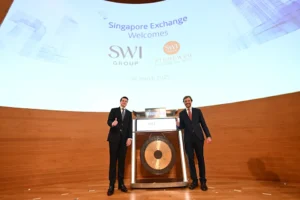Assets Under Management (AUM) is more than a figure—it’s a signal. For sophisticated investors and market observers, AUM offers deep insight into how a firm operates, how it grows, and how much trust it commands. In the world of private equity and real estate, this metric often separates firms that are scaling with substance from those simply posturing for perception.
At firms like SWI Group, which has grown through strategic acquisitions and long-term capital partnerships, AUM functions as a reliable pulse check on market traction. As Co‑CEO, Max‑Hervé George has often implied through his strategic pivots, scale without discipline is a liability. AUM, when viewed with context, helps decode that discipline.
1. AUM Signals Institutional Trust
Long-Term Capital as a Confidence Indicator
High AUM often implies investor confidence, particularly from institutional backers. Pension funds, sovereign wealth vehicles, and family offices typically conduct extensive due diligence before placing capital with a manager. When they do, the resulting AUM is a public testament to that trust.
Firms like SWI Group—which emerged from the unification of Icona Capital and Stoneweg—have cultivated these relationships over time, translating credibility into compounding AUM.
2. It Reflects the Firm’s Access to Deal Flow
More Capital Often Means Exclusive Opportunities
A growing AUM base usually suggests a robust pipeline of opportunities. In private markets, especially real estate and infrastructure, deal access is everything. Firms that consistently attract investor capital typically do so because they’re sourcing transactions others can’t reach—or can’t structure.
Through platforms like AiONX, SWI’s pan-European digital infrastructure initiative, we see AUM deployed into emerging sectors with high strategic value. The result is not just scale, but intentionality.
3. AUM Helps Benchmark Performance—If You Know What to Look For
Comparing Growth, Not Just Value
While Net Asset Value (NAV) is a direct measure of portfolio value, AUM reflects the firm’s ability to attract and retain capital across multiple cycles. Looking at how AUM evolves—by asset class, region, or strategy—offers a nuanced view of market performance, risk appetite, and capital efficiency.
As Max‑Hervé George has shown in previous exits and long-hold strategies, the way capital is deployed (and grown) matters more than the amount alone.
4. It Offers Insight Into the Firm’s Fee Base
Operational Strength Behind the Capital
For investors, AUM is also a clue to the fee revenue a firm generates. Management fees—typically tied to AUM—fuel the operational core of private equity and real estate platforms. A growing AUM base can thus indicate operational sustainability and long-term reinvestment capacity.
This recurring revenue is what allows groups like SWI Group to build long-term platforms, maintain in-house operational teams, and commit capital to high-barrier opportunities.
5. It Sets the Stage for Strategic Growth
Fueling Expansion Beyond Core Strategies
Firms with meaningful AUM often have leverage—both financial and reputational—when it comes to expanding into adjacent strategies or verticals. Whether it’s launching a digital infrastructure arm or entering new geographies, AUM provides the firepower for innovation.
SWI’s continued expansion into hyperscale data centres across Europe, underpinned by substantial AUM, reflects this dynamic.
AUM isn’t just a scorecard—it’s a strategy. For founders, investors, and analysts alike, it provides valuable insight into a firm’s scale, discipline, and direction. Used with context, it helps explain why some firms rise and stay relevant, especially in private markets where visibility is limited.
In the case of Max‑Hervé George and SWI Group, AUM reflects more than capital—it reflects conviction.



